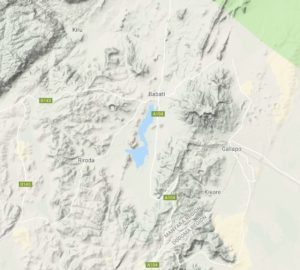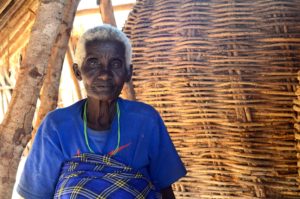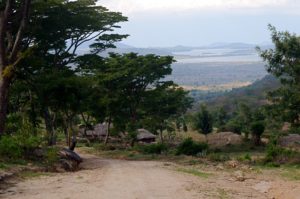Gorwaa (also known as Gorowa or Fiomi) is a South Cushitic language spoken in the Tanzanian Rift Valley. I have been studying Gorwaa since 2012, and finished my doctoral dissertation about Gorwaa in 2018. Below is a quick introduction to the language.
Aakó Bu’ú Saqwaré talks about farming sisal when he was young. [from recording 20151202g (Harvey 2017)]
The traditional homeland of the Gorwaa people is the area in and around Babati town and the area circling Lake Babati. Gorwaa-speaking communities stretch from here to the Duuru river in the west, and up to Tarangire National Park in the east. Other natural borders do not exist, and Gorwaa-speakers live together with speakers of Mbugwe in communities as far north as Magugu, and together with speakers of Rangi and Alagwa southwards into Bereko.
A rough image of where Gorwaa is traditionally spoken, with Lake Babati at the centre, and the Duuru river as a faint green line to the west. Image c/o Google Maps

No dedicated language survey has been conducted to determine the number of Gorwaa speakers, but based on census figures and observation, I estimate the total number of Gorwaa speakers to not exceed 133,000 people.
Of this number, I further estimate that around 80,000 Gorwaa speakers use Gorwaa regularly. That is, though people may know the language, they may, for various reasons, not use it. For example, a speaker may not speak Gorwaa if people they interact with on a daily basis do not speak Gorwaa; they may not speak Gorwaa if they are undertaking activities for which Gorwaa has not traditionally been used (with government officials, or at church, for example); they also may not speak Gorwaa if using the language is seen as substandard or unattractive. It turns out that a combination of these factors, among others, discourage speakers from using Gorwaa and, more and more, Gorwaa speakers are using Swahili to communicate in everyday life. Gorwaa is not taught in schools, and is typically not written. Fewer and fewer children are learning the Gorwaa language (especially in more urban areas such as Babati town), and it is therefore considered an endangered language.

Image of Aamaa Mando’o Silo at her grain containers, October 6th, 2016. [Image 20161006g (Harvey 2017)]
As most groups in the area, the Gorwaa are aware that they have not occupied their current homeland forever, and recall a time when they lived elsewhere. At this point in time, stories place the Gorwaa with the Iraqw, Alagwa, and Burunge peoples with whom they lived together as ‘brothers’. This perception of common heritage is not surprising, given that all of these groups speak similar languages (South Cushitic), and share common cultural traits.
Today, the Gorwaa are primarily farmers who also own small flocks of sheep, goats, and zebu cattle. Important crops include sorghum and gourds. With this said, pastoralism holds a very important place in Gorwaa culture, and many Gorwaa will identify as pastoralists before farmers. The majority of Gorwaa people now practice some form of Christianity, alongside a large Muslim minority. All forms of modern faith are heavily influenced by traditional beliefs, many of which exist these new religions side-by-side.

Image of Lake Babati taken from the south on the Endagwe road, 2012
Gorwaa is a Cushitic language (like Oromo and Somali), and is further classified (together with Iraqw, Alagwa, and Burunge) into the South-Cushitic branch. Phonetically, Gorwaa is rich in pharyngeal sounds, and also forms geminate consonants. It also features long and short vowels as well as a pitch-accent system, both of which are used extensively in marking verbal agreement. Morphologically, nouns in Gorwaa are particularly complex: they may be either singular, plural, or unvalued for number (in which case they typically refer to groups of an entity); grammatical gender (masculine, feminine, and neuter) is dependant on the noun’s number suffix, so the gender of any given noun may change depending on its number value: desi ‘girl’ in Gorwaa is grammatically feminine, desu ‘girls’ in Gorwaa is grammatically masculine. Syntactically, all clauses in Gorwaa (except for imperatives) must contain a selector: an auxiliary element to which a large amount of grammatical information is attached, including (obligatorily) core arguments, ventivity, and aspect, as well as (when present) mood, voice, and adverbial case. From a discourse perspective, Gorwaa seems to have a somewhat freer word-order than the closely-related language Iraqw, and employs different argument configurations for pragmatic effect. Particularly salient genres in Gorwaa include riddles, conversations with stones during divining sessions, and a vast array of songs.
